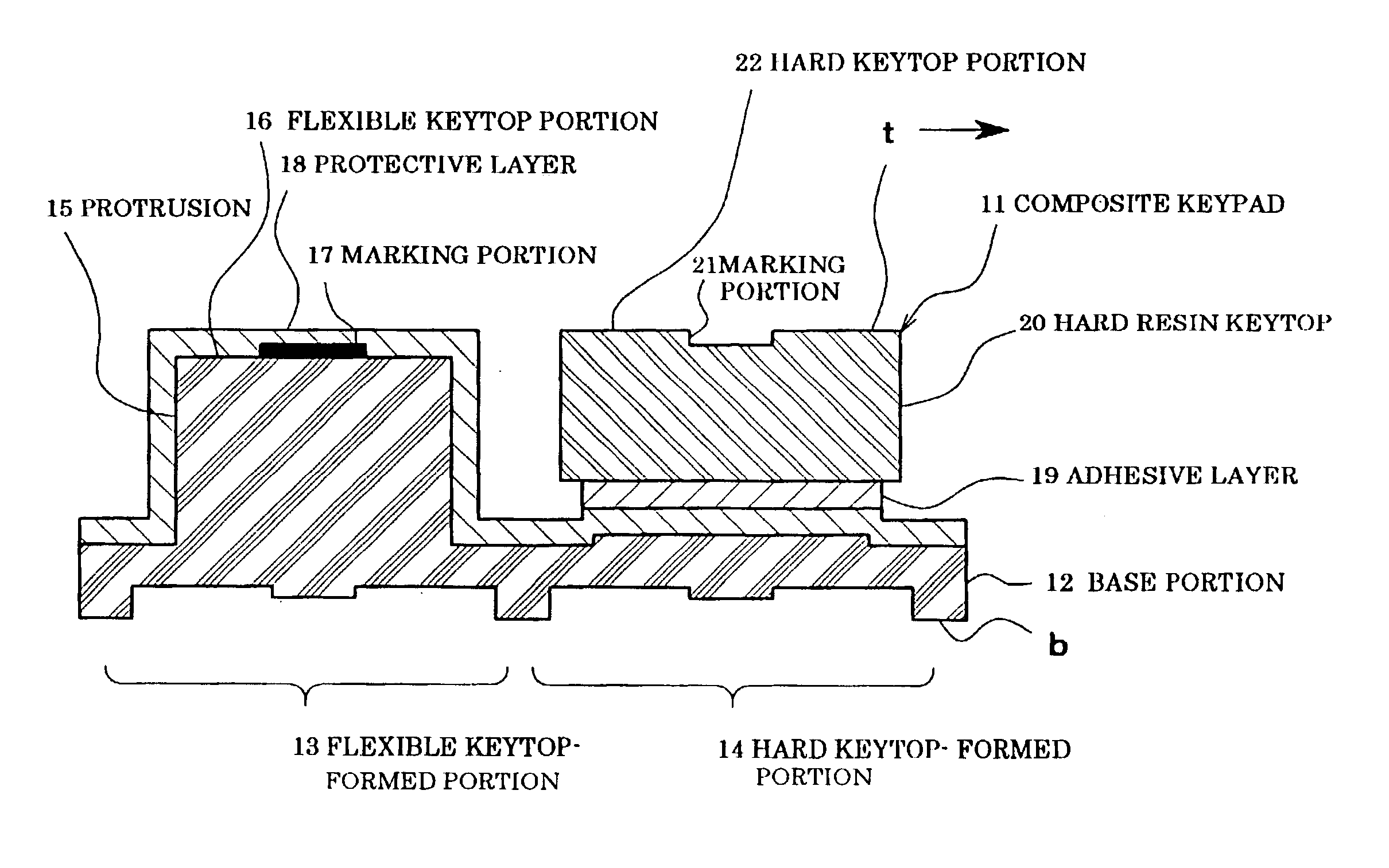However, the above-mentioned adhesives having such advantages can never be said to be perfect for any possible purpose, and some problems still remain to be improved on the following points.
One problem to be improved is poor adhesion to plastics.
Another problem to be improved is that the workability of the bonding adhesive is unsatisfactory.
That is, the use of conventional adhesives may result in stringing of the adhesive from the nozzle of a coating apparatus, and also may result in sagging of the adhesive after coating when coated on members or the like with an edge surface.
The poor workability of the adhesive raises such problems as adhesive composition adhering to a different part relative to the target part, or the adhesive sagging and consequently aggravating the design of the product as members to be bonded at positions adjacent to each other cannot be bonded at right positions, respectively.
However, the above-mentioned conventional adhesives cannot provide such high adhesion and it is necessary to subject the keytop portion or base portion to the above-mentioned preliminary treatments before they can be bonded in the bonding step in order to increase the adhesion.
Therefore, it has been practically difficult to simplify the bonding step.
Further, since the above-mentioned conventional adhesives have poor bonding workability, the adhesive composition may adhere to a different part relative to the target part, or sags and consequently aggravates the design of the keypad for push-button switches.
According to this keypad for the push-button switch, high adhesive strength is obtained and it is difficult for the keytop portion to be peeled away from the base portion since the base portion made of a rubbery elastic material and the keytop portion made of a hard resin are bonded together through the adhesive layer made of the solidified active energy ray-curing adhesive composition containing a urethane (meth) acrylate, a (meth) acrylamide compound, and a hydroxyl group-containing (meth)acrylate.
Further, even if a protective layer that protects the base portion is formed between the base portion and the adhesive layer, it is difficult for the keytop portion to be peeled away from the base portion since the adhesion between the protective layer and the adhesive layer made of the above-mentioned solidified adhesive composition is excellent.
In particular, in the case where the protective layer is made of a crosslinking urethane resin, the keypad has a disadvantage.
That is, although the resin has not been crosslinked at the time of coating, thus giving excellent workability, and being exceedingly durable due to crosslinking, a phenomenon occurs in which the initial adhesion changes with a lapse of time, presumably since the reaction gradually proceeds also after the formation of the keypad, and thus the keypad after a considerable time is not sufficiently adhered.
If this amount is less than 10 parts by mass, there is the fear that the curability of the adhesive composition is aggravated while if it is above 70 parts by mass, there is the fear that the viscosity is too high so that the bonding workability is aggravated.
If this amount is less than 5 parts by mass, there is a fear that the effect of improving the adhesion to plastics serving as an adherent is decreased.
Particularly when the adhesive composition is used for a keypad for push-button switches, it is possible that no adhesion is obtained between the keytop portion and the protective layer, and workability is very poor.
If this amount is above 55 parts by mass, there is the fear that the curability of the adhesive composition is aggravated.
If this amount is less than 1 part by mass, there is the fear that sagging occurs considerably so that the effect of improving the bonding workability cannot be obtained; in particular, when the adhesive composition is used for a keypad for push-button switches, the adhesive may flow out onto the base portion where bonding is unnecessary.
On the other hand, if it is above 15 parts by mass, there is the fear that the viscosity is too high so that the bonding workability is considerably aggravated.
If this amount is less than 0.05 part by mass, there is the fear that stringing occurs so that good bonding workability is not obtained; in particular when the adhesive composition is used for a keypad for push-button switches, a cured product of the adhesive composition produced by the stringing may remain between the keytop portions adjacent to each other.
On the other hand, if it is above 2.0 parts by mass, there is the fear that the viscosity is too high so that the bonding workability is considerably aggravated.
If the thickness of the film is less than 5 .mu.m, the mechanical strength of the protective layer is weak so that it cannot sufficiently protect the surface of the base portion 12.
On the other hand, if the thickness of the film is above 100 .mu.m, the flexible keytop portion 16 and the hard resin keytop portion 20 give a heavy pressing operation feeling and thus it is undesirable.
However, the plasma treatment is relatively complex as it must be performed under vacuum, and the flame treatment can be somewhat dangerous, so consequently the short-wavelength ultraviolet irradiation treatment and the corona discharge treatment are the most desirable methods.
Among photoreactions, ultraviolet ray curing is more preferable since visible light curing has a disadvantage in that even light from an ordinary working lamp initiates the reaction but ultraviolet curing provides good workability.
 Login to View More
Login to View More 


